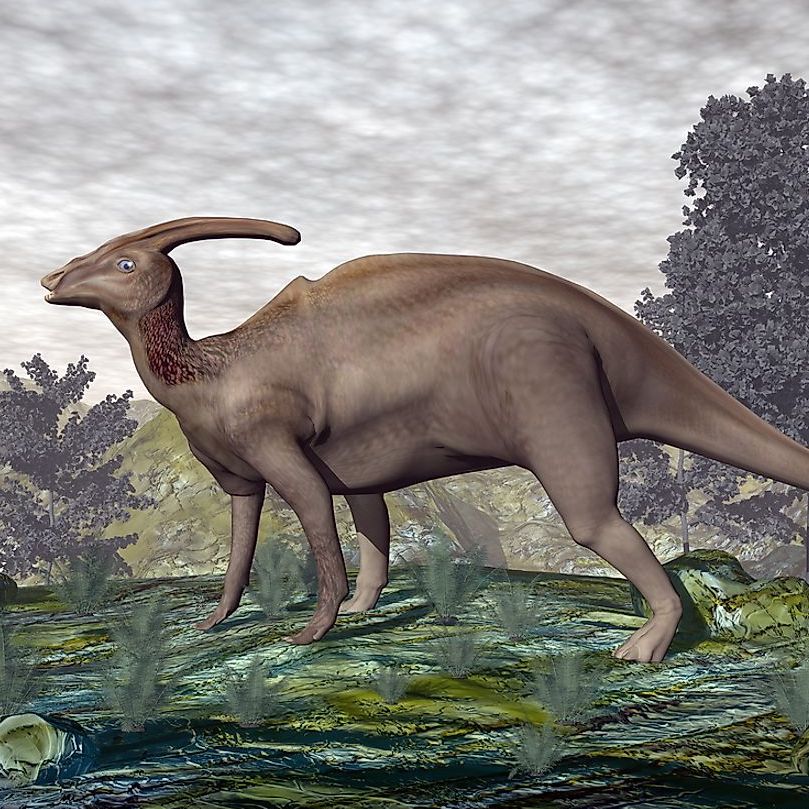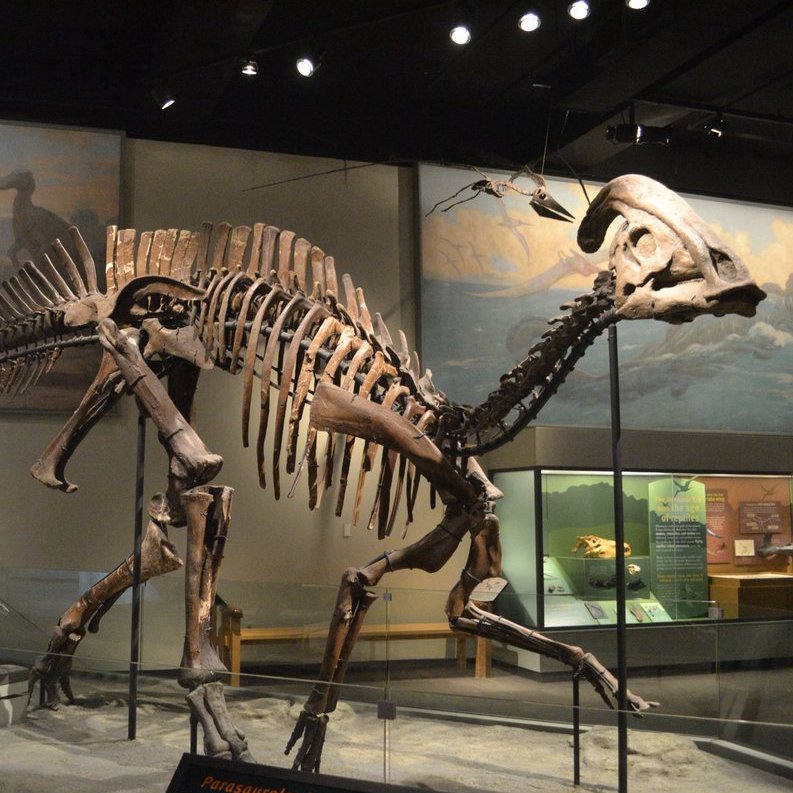Parasaurolophus was a bipedal, herbivorous ornithischean dinosaur that dwelt in what would become the North American midwest during the late Cretaceous period. It is recognizable for the long, blunt crest protruding from the back of its skull. Although the exact purpose of this crest is a matter of some debate, aesthetic value, temperature regulation, and even vocalization have all been proposed as possible uses for the formation.
Parasaurolophus had hundreds of small teeth packed into its teeth and jaws.
Parasaurolophus had a body mass of approximately 5056.8 kg
When confronted by a predator they turn tail and run at speeds on around 30mph.

Even though its snout was far from its most prominent feature, Parasaurolophus is still classified as a hadrosaur, or duck-billed dinosaur. The hadrosaurs of the late Cretaceous period evolved from (and technically are counted among) the plant-eating ornithopods of the late Jurassic and early Cretaceous periods, the most famous example of which was Iguanodon. (And no, in case you were wondering, these duck-billed dinosaurs had nothing to do with modern ducks, which actually descended from feathered meat-eaters!)
The most distinctive feature of Parasaurolophus was the long, narrow, backward-curving crest that grew out of the back of its skull. Recently, a team of paleontologists computer-modeled this crest from various fossil specimens and fed it with a virtual blast of air. Lo and behold, the simulated crest produced a deep, resonating sound--evidence that Parasaurolophus evolved its cranial ornament in order to communicate with other members of the herd (to warn them of danger, for example, or signal sexual availability).
Fossils of Parasuropholus have been found in widespread areas, which means they must have traveled fare and wide. The have been found in Canada, New Mexico and Utah, and even China. Parasauropholus was first described in 1922 by William Parks from a skull and partial skeleton found in Alberta, Canada.

Want to learn more about the dinosaur species? Click on the buttons below to read all about these prehistoric creatures.
Features of the Apatosaurus head were disputed for a century after its remains were first uncovered.
Know MoreThis dinosaur is one of the longest and most recognizable dinosaurs on the planet.
Know MorePterodactyl had wings formed by a skin stretching from its fourth finger to its hind limbs.
Know MoreIt is believed that Triceratops ate mostly low growth vegetation such as ferns and shrubbery.
Know More